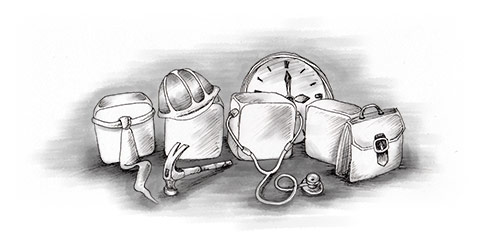The first thing you will need to have in place before considering a job in Australia are your working visa papers. There are four different visa categories depending on your situation: visitor, student, temporary residence and migration. For more info about them, see our introductory guide on visas and the following articles.
You can also arrange a working holiday visa: this way you will be allowed to spend 12 months in Australia working seasonal jobs. It takes a while to process, so plan at least 3 months in advance. If this sounds like you, check the dedicated guide from Byevisa to clear up any questions.
Wages
Government surveys of average weekly earnings are published regularly for a wide range of trades and professions, both nationally and for individual states and cities. The government-run organisation Fairwork has a website where you can consult wages and conditions of employment information.
In May 2020, the average weekly wage for adults in full-time employment was around $1,713.90 or $89,122.80 a year. It's important to mention that the average income into account people with very high earnings, making the figures higher. A more accurate figure is the median which sits around the $50,000 mark.
Graduates can expect annual salaries of around $63,000, while retail workers tend to earn around $45,000 per year. At the other end of the scale, managing directors earn between $150,000 and $350,000. Executive salaries in Australia are fast catching up with the rest of the world, and expatriate American bosses of top Australian companies earn millions a year (including tens of millions in bonuses in the form of share incentives/options and performance-related bonuses).
Working hours
Working hours in Australia vary according to your employer, your position and the type of industry in which you’re employed. A national 38-hour working week was introduced in 1981, since reduced to 37 hours. However, many people work longer hours, particularly employees in factories, who often work ten or more hours’ overtime per week. (A recent survey showed that almost a third of full-time employees work more than 48 hours per week.) A standard working day (without overtime) for a blue-collar worker is from 7 or 8am to 3.30 or 4.30pm, while working hours in most offices and shops are from 8.30 or 9.30am until 4.30 or 5.30pm, with an hour’s break for lunch.
Tax File Number
Your tax file number (TFN), consisting of nine digits, is probably the most important number you receive in Australia. Without one, you’re taxed at the maximum rate (47 per cent) on all your wages (it’s that important!). You also need a TFN to claim unemployment and sickness benefits, to make any investment and to enrol in a fee-free course of higher education. It’s required when completing your annual income tax return and when you start work or change jobs (there are both personal and business tax file numbers).
You can obtain an application form for a TFN from your local Australian Tax Office (ATO). You must produce identification, such as your birth certificate, driving licence or passport with a valid visa, and should receive your TFN around two weeks after making an application. The ATO publishes a brochure, Applying for Your Tax File Number, which explains the application procedure.

